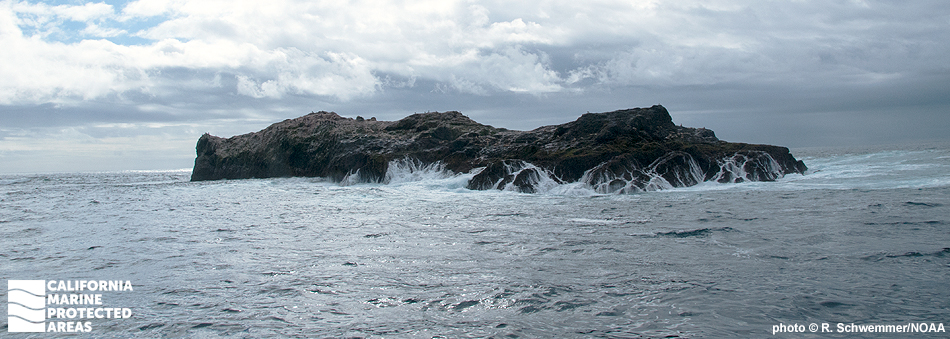
Overview
Richardson Rock State Marine Reserve (SMR) and the federal Richardson Rock Marine Reserve (FMR) are located northwest of San Miguel Island, the westernmost of California’s Channel Islands. The SMR covers nearly 41 square miles of ocean, and where the SMR ends at three nautical miles from shore, the FMR continues farther offshore to meet the outer boundary of the surrounding Channel Islands National Marine Sanctuary.
Richardson Rock SMR and FMR are located in open water at the western boundary of the sanctuary. Roughly six miles from San Miguel Island, the massive Richardson Rock rises abruptly out of deep water. A spectacular pinnacle, it draws adventurous divers who are willing to brave the often stormy seas to see the incredible ecosystem in this marine protected area (MPA). Steep walls, drop-offs, large holes, and pinnacles provide shelter for invertebrates like white-spotted rose anemones, scallops, tubeworms, and barnacles, as well as octopus, lingcod, vermilion rockfish, and wolf-eels. Seals and sea lions visit this remote islet to hunt the rockfish schooling near its rocky pinnacles.
Regulations
It is unlawful to injure, damage, take, or possess any living, geological, or cultural marine resource.
California Code of Regulations Title 14, Section 632(b)(101)(opens in new tab)
Note: The state and federal marine reserves share identical regulations.
Quick Facts
These facts are for the state marine reserve only.
MPA size: 40.75 square miles
Depth range: 0 to 558 feet
Habitat composition*:
- Rock: 0.13 square miles
- Sand/mud: 0.68 square miles
*Habitat calculations are based on three-dimensional area and may exceed the total MPA area listed above.